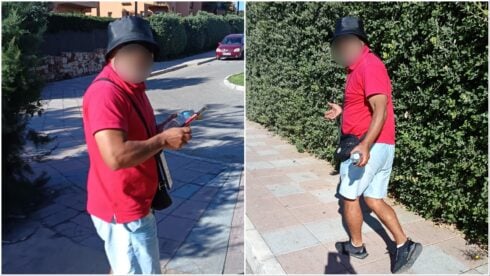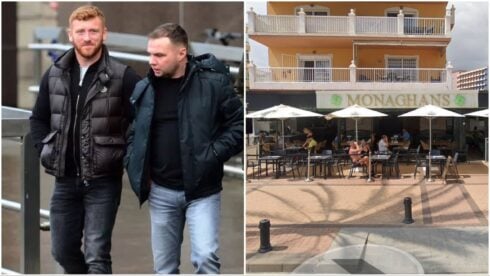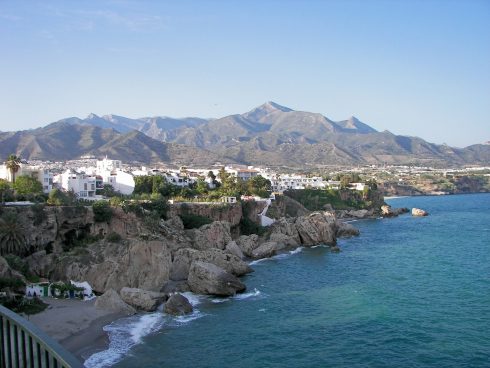For thousands of years, all cultures have passed through the Costa del Sol. A recent discovery of human remains in the cave of Pecho Redondo in Sierra Blanca shows evidence of human presence in the region from 25,000 years ago.
These civilisations have risen and fallen through the centuries, but each have left their mark through iconic architecture leading to some of the most archaeological discoveries in the past decades.
While the Costa del Sol is now bustling with holidaymakers, the cosmopolitan city of Marbella and the surrounding towns offer much more than beaches for those interested in culture and history.
Arabic old town of Marbella
Marbella’s Old Town has a unique almond-shaped layout that dates back centuries. This unusual shape resulted from the boundaries set by the walls of the ancient Arabic fortress, which enclosed the town for centuries.
The Muralla Urbana, constructed in the 10th century, once featured at least 20 towers, but the ruins of the wall now borders a small school, a stone’s throw from the historic Plaza de los Naranjos.
The square, founded in the 15th century after the Christian conquest, has been the town’s social, political and commercial epicentre for centuries, surrounded by a grove of orange blossoms.
Historic buildings, such as the Renaissance Town Hall and Magistrate’s house neighbour countless terraced cafés and quaint shops, capturing Marbella’s essence.
The Old Town is made up of 44 labyrinthine cobble streets and four small squares, including a well-preserved large square dating back to when Muslims ruled Al-Andalus, from 711 and 1492 AD.
Although ancient civilizations such as Visigoths, Romans and Byzantines, are thought to have inhabited this historic region before that, few archaeological remains have survived since they abandoned it.
Parroquia la encarnacion de Marbella
Only steps from some of the ancient walls’ ruins lies the Church of the Incarnation, a Catholic church built on an existing mosque in the 16th and 17th century. It is still a functioning basilica today, where locals come to pray.
After the Reconquest of Marbella in 1485 and the expulsion of Muslims from southern Spain, this church was converted from a mosque and subsequently renovated a few centuries later.
The impressive bell tower was erected in 1618, and its basilica-style layout and the Rococo-style main entrance made of ochre stone, known colloquially as the Puerta del Sol, was inaugurated in 1767.
The church proudly houses the magnificent Sol Mayor Organ, a masterwork of craftsmanship completed in the early 1970s. Comprising of 5,000 pewter, copper and wood pipes, it stands as one of Andalusia’s most remarkable treasures.
This reflects Marbella’s deeply layered history, becoming a Christian church after first standing as a mosque amid centuries of cultural and social shifts. Its Baroque and Rococo architecture showcases its splendour and has long been cherished by the community.
Termas Romanas de las Bovedas
Situated on the riverbank at the mouth of the Guadalmina River in San Pedro Alcántara, this site is near the thermal baths once used by early Roman settlers as early as in the 3rd century AD.
Once surrounded by fields in ancient times, these baths on the coast are now surrounded by restaurant and beach-front properties.
Discovered in 1926, these springs are believed to have supplied water to the ancient Roman city of Cilniana, believed to have existed in the 1st century BC.
The baths, built with whitewash mortar, brick, and marble, are well-preserved with a vaulted roof, two floors, and a heating system, making them among the region’s most important archaeological sites.
Though now reduced to ruins, the baths once stood as a testament to the ingenuity of early Roman settlers, showcasing their advanced construction techniques and sophisticated water management systems for their time.
The thermal baths remained in use until the 5th century AD. True to the spirit of the Costa del Sol, later civilizations repurposed the ruins, adding basins for salting fish and, in the 1570s, constructing the Las Bóvedas watchtower.
These remains offer a remarkably well-preserved glimpse into Marbella’s ancient cultural past. They provide valuable insight into the past civilizations that once thrived here, building upon each other.
Basilica Vega del Mar in San Pedro Alcantara
The ruins of an early Christian double-apse basilica and a necropolis dating back more than 1500 years are one of the most brilliant archaeological examples of early Christianity.
The temple, designed in a horseshoe shape and enclosed within a rectangular frame, features one wall that remarkably still bears an engraved baptismal font alongside a carved fish. These details led archaeologists to point to centuries of Greek influence in the region.
The remaining walls are some of the few examples of North African Visiogothic churches ever built in Andalusia during the sixth century. An ancient burial site with over 200 tombs was also soon discovered.
The varied designs of these tombs reveal their origins across different eras, reflected in their unique shapes, burial traditions, and distinctive craftsmanship. According to recent research, some may trace their history as far back as the third century AD.
Villa romana de Rio Verde
At the mouth of Río Verde river near the docks of the coveted Puerto Banus, lies an ancient 2000-year-old roman villa, which was discovered and excavated in the early 1960s.
With its lavish design, featuring mosaic-covered corridor floors and rooms, it is believed the villa once belonged to a wealthy merchant who made the most of the nearby sea to run a thriving fishing business.
The most captivating feature by far is a mosaic of Medusa’s head set into the floor of one room, reflecting the ancient Roman belief that her gaze would deter thieves and keep unwelcome visitors away.
Unfortunately, the part of the floor mosaic depicting the mythological gorgon was stolen in 2016. The site closed for six months whilst a police investigation was carried out, but the thief and original tiles have never been found.
In 2017, specialists began a meticulous restoration of Medusa’s face, replacing more than 1,400 mosaic tiles and learning of the Roman’s original use of special stones and glass hidden within the artwork.
The restoration honoured the original era’s craftsmanship, yet was carefully designed so that visitors could distinguish between the original and replica tiles.
The ancient heritage of Costa del Sol reveals a deep cultural history shaped by countless civilizations of the centuries. Its archaeological sites offer a rare glimpse into the distant past of its region’s evolving identity and enduring significance throughout history.
Religious and communal structures like the Church of the Incarnation highlight how faith and architecture was reimagined through conquest and coexistence, enduring significance throughout history.
Marbella’s historic core exemplifies the fusion of diverse cultures, blending Arabic, Roman, and Christian influences. This layered history enriches the modern city, making it a living testament to centuries of cultural transformation.
Click here to read more Costa Del Sol News from The Olive Press.








